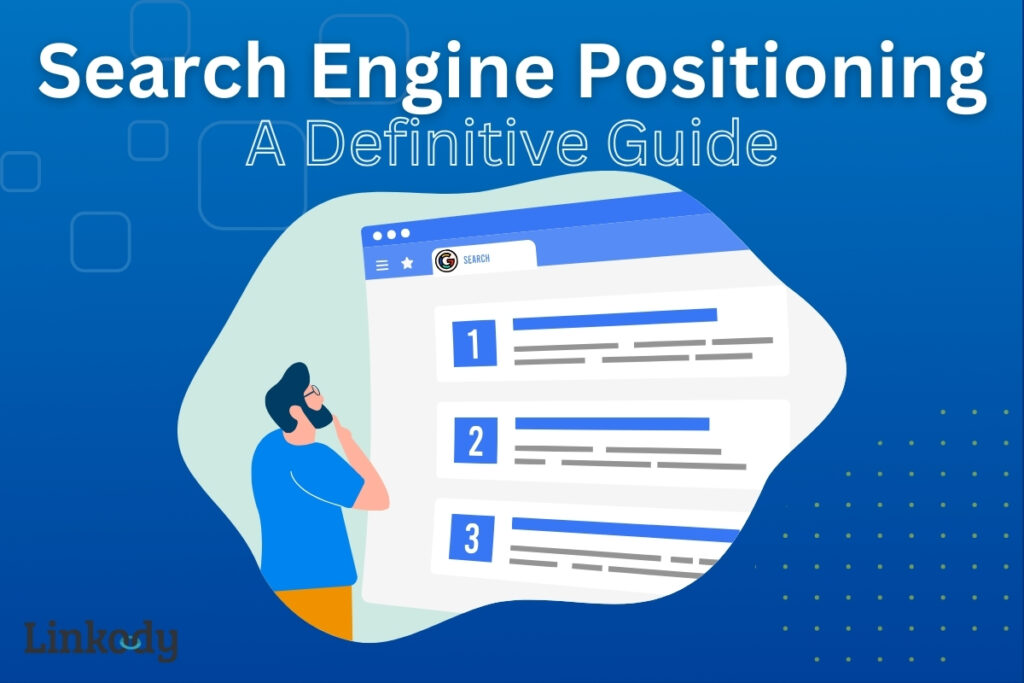
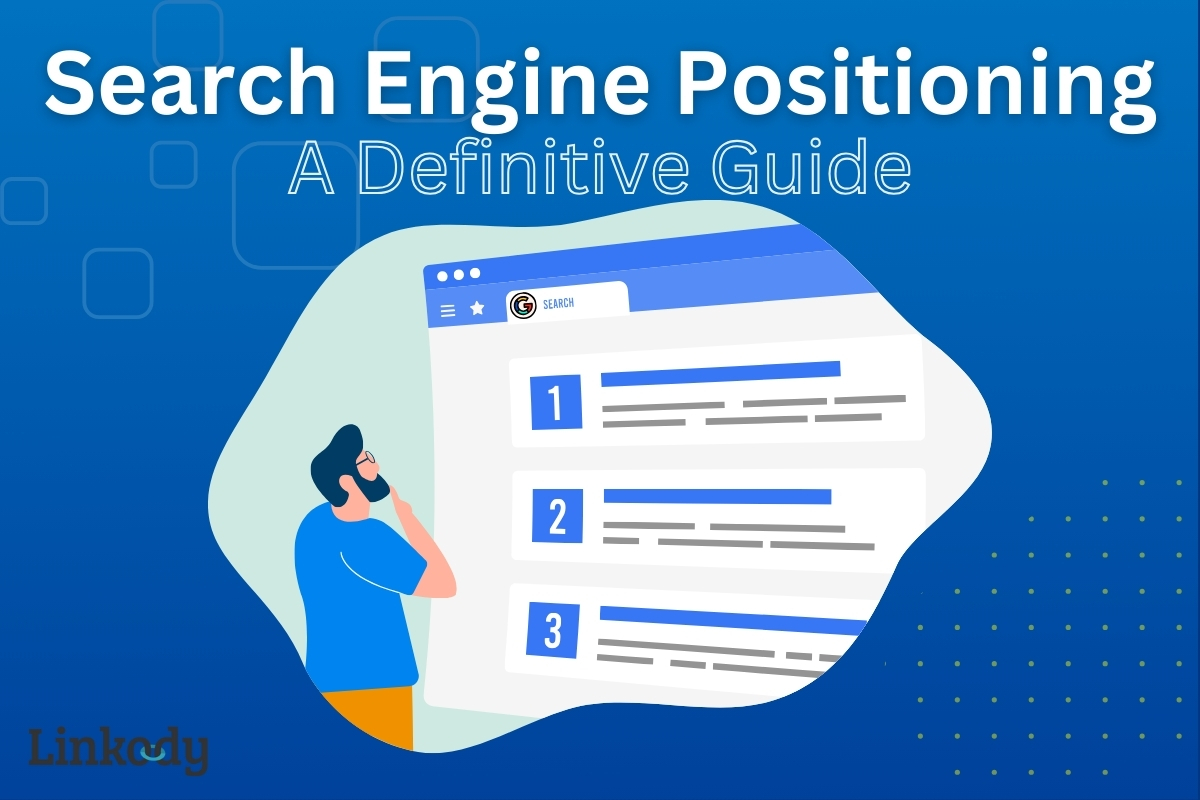
The moment you engage in SEO, you resign yourself to a never-ending competition of snagging the top spot on Google SERPs. After all, what’s the point of creating tons of web pages and busting out a plethora of content if nobody gets to see them?
It’s no secret that the higher a web page’s SERP position, the more web traffic and, potentially, conversions, it receives. Driven by this perspective, search engine positioning is your best weapon to ensure SERP dominance.
I’m guessing right now your head is flooded with some lingering questions, like:
- What does search engine positioning really mean?
- Is it a different concept from good old search engine optimization?
- Are there any benefits to it?
- How can we rank #1 on Google’s SERPs using SEP strategies?
Stay tuned because Linkody aims to answer all of these questions in this definitive guide on search engine positioning.
What is Search Engine Positioning?
Search engine positioning is the continuous process of optimizing individual web pages to improve search engine result rankings for various keywords or search queries.
“Wait, isn’t that definition awfully similar to SEO?”
Well, yes. At first glance, both SEO and SEP may look the same since both are focused on dominating search results. However, there are core differences between the two concepts that set them apart.
Search Engine Positioning vs Search Engine Optimization
Search engine optimization is a domain-wide method to improve the website’s SERP ranking. On the other hand, search engine positioning concentrates on helping specific web pages within a domain to rank higher in search results. It’s safe to say that SEP is a subset of SEO, with SEO taking a broader approach and SEP, a more specific route.

On the surface, the difference between SEO and SEP might not seem relevant. However, it becomes clearer once we take into account the business value (or potential revenue) that web pages offer within a website.
For example, informational pages like “About Us” are often static and only provide company history, mission, and team information. Pages like these hardly have any value for customers searching for particular products and services. In this case, optimizing for keywords on About Us pages is a big waste of time as far as business value is concerned. Therefore, SEP efforts will probably ignore optimizing for About Us pages and other static pages similar to it, like:
- Contact Us
- Terms & Conditions
- Privacy Policy
- Login/Signup pages
- Thank You pages
Search engine positioning is a strategy focused on improving the ranking of specific pages, particularly those that users will be searching for, or the ones offering the most business value to the company. These include:
- Blog posts
- Landing or sales pages
- Product pages
- Services pages
- Category pages
The above pages are crucial for attracting organic traffic and often compete with other websites in ranking for search engine results pages. Therefore, they become the primary targets for SEP efforts, which involve optimizing content, structure, and technical aspects to improve the ranking potential of web pages for relevant keywords.

How Does Search Engine Positioning Benefit Your Business?
Integrating search engine positioning strategies is crucial because it offers a two-pronged advantage to both businesses and users:
- People can find terms and products relevant to their search intent
- Companies can optimize for keywords or queries that offer the best business value
When you disregard search engine positioning, you lose favorable rankings and miss out on high-quality organic traffic that high-visibility SERP positions get. Moreover, you sacrifice the opportunity to promote your products and services, limiting your revenue potential and profitability.
Keep reading to discover the particular benefits of infusing SEP strategies with your marketing efforts:
Higher Click-Through Rate (CTR)
Search engine positioning revolves around helping web pages achieve a high position in SERPs. Optimizing a particular web page for relevant search queries, improving content structure, updating content information, and refining the UI/UX all contribute to a higher ranking.
Getting more favorable positions in search results often translates to higher click-throughs. Statistically speaking, results that land within the top 3 positions gain the lion’s share of clicks versus those beyond it.

It’s important to remember that click-through rate is not just a function of SERP positioning. Optimizing meta titles, meta descriptions, rich snippets, and site links are all essential to improve CTRs. Otherwise, even high-ranking search results may get fewer clicks if the mentioned aspects are left unoptimized.
Another alternative tactic to boost CTR is to optimize content for Google’s featured snippets. Contrary to regular position #1 (31.73% CTR), featured snippets get an even higher 35.1% CTR on SERPs, which is crucial for heavily competitive niches.
Increased Organic Traffic
In relation to higher CTR, websites with better search engine positioning are also more likely to get higher organic traffic.
For instance, the search query “coffee grounds for fertilizer” gets a monthly active search of 1,600. Since data tells us that featured snippets receive 35.1% CTR, snagging the featured snippet section gives a website an additional 562 web visitors.

More traffic translates to increased brand visibility, but this may also influence customer awareness and brand recognition.
How?
With increased traffic, you have more room to educate visitors about your products, services, and the qualities setting you apart from the competition. This also gives you more opportunities to engage with your audience, say, through the comments section.
Potential Increase in Conversions
Higher click-through rates and increased organic traffic are essential business parameters for SEO. However, the single, true measure of business value is conversion rate. After all, what value do traffic and CTR have to offer if you receive no pennies from web visitors?
It’s important to remember that higher traffic and click-through rates do not guarantee sales. However, the likelihood of converting leads to buyers is higher in websites with 10,000 monthly visitors compared to those with only 1,000 organic traffic.
Think about it. SEP or SEO can be likened to a fishing net. Hypothetically, the larger the net, the more fish you can catch, you just need to locate where the fish are. In the context of SEO, that’s where “optimizing content for search intent” comes in.
Some industries get better conversion rates than others. If your industry falls into one of the categories shown below, always make it a goal to get a higher conversion rate than average.

Become the Industry Leader
Dominating your niche seems too good to be true, especially if you compete in a highly saturated industry. However, implementing good SEP practices can make this possible.
When the conversions start coming in and the brand recall is at an all-time high, you are arguably set to lead your industry.
Speaking of which, what are the strategies to boost search engine positioning?
Strategies to Rank #1 in Search Engine Positioning
Search engine positioning and search engine optimization are similar in a lot of ways. This similarity extends even to the sets of good practices between the two concepts. While SEP focuses more on individual web pages, you are likely to find overlaps with your existing search engine optimization strategies.
Here are tactics to improve the search engine positioning of your websites:
#1 Find Your Niche
The niche or industry precedes all other practices you can employ for your SERP positioning.
More specific niches have the advantage of lesser competition. This increases the chances of websites making their way to becoming a niche authority.
However, specific niches also come with their drawbacks. For instance, some industries can be too niche to the point where getting patrons is an impossibility.
Of course, this advice only makes sense for users without businesses yet. But even if you already have a running business, you can always choose to niche down and find the sweet spot that allows you to become the industry authority.
For example, if you’re a full-service SEO agency that serves all industries, consider niching down to offering SEO services for a specific field, like medical cosmetics. Not only does this reduce competition, but it also deepens your expertise, giving you a stronger value proposition.
#2 Implement the SEO Trifecta
Search engine positioning is still a subset of SEO. Therefore, the same trifecta (technical, on-page, and off-page SEO) used for SEO should also be applied to specific web pages.
Here are ways to infuse search engine positioning with good practices on technical, on-page SEO, and off-page SEO:
On-page Optimization
- Keyword optimization: Use return data from Google Search Console to optimize the content for ranking keywords. Integrate targeted keywords strategically throughout the content, meta titles & descriptions, and headings. (More on this below)
- Internal linking: Build internal links to relevant pages within the website for better navigation and user experience. This also allows link juice transmission and demonstration of topical relevance. (More on this below)
- Image optimization: Use relevant keywords in image alt texts to improve search engine visibility. Compressing image file size also benefits page speed, offering a seamless user experience.
Off-page Optimization
- Backlink building: Focus on acquiring high-quality backlinks (same niche, high authority) toward your intended web page. Backlinks signal trust and confidence, further boosting the web page’s ranking on SERPs. (More on this below)
- Social media engagement: Promote the web page on social media to spark discussion and online engagement from people.
- Use public relations and influencer marketing: If applicable, you may partner up with influencers to secure placement in social media publications. This can siphon valuable traffic that leads to an increase in brand awareness.
Technical Optimization
- Structured data implementation: Structure data markups provide search engines with richer information about the page’s content. For example, product ratings or business hours are valuable details that can skyrocket your CTR.
- Mobile-first indexing: Ensure that your web page is mobile-friendly and optimized for mobile searches.
- URL Structure: Create a clear and concise URL that is descriptive, evergreen, and keyword-rich.
#3 Publish Exceptional, Targeted Content
Content is the footstool of both search engine positioning and optimization.
Publishing high-quality content on your website can greatly increase its positioning on search results. One of the vital steps to publishing high-quality content is keyword research.
Keyword research can help you “enter” the minds of users and explore their interests. This process can reveal important information that may guide the direction of your content creation. Some important data to consider are:
- Estimated monthly search volume
- Keyword difficulty
- Search trends
- Competing web pages
Armed with this information, you can find content gaps and devise low-competition topics that speak personally to your audience.
There’s just one problem: Many SEOs and business owners still confuse keywords with search intent.
Keywords and search intent are not the same. Even if you actively use keywords, your content probably won’t appear on SERPs if there is a mismatch between the keywords and the intended search intent.
One way to find this is by manually analyzing SERPs. Look at the results and try to pin them according to their corresponding search intents, which are as follows:
- Informational: Users search for additional knowledge on a subject
- Navigational: Users search for specific information to find specific web pages
- Commercial: Users are motivated to buy but need more convincing, like a comparison between products, services or service providers
- Transactional: Users are ready to purchase and have a specific product or service in mind
Once you nail down the keywords and its corresponding search intent, you increase your chances of producing read-worthy material.
#4 Build Effective Internal Links
As mentioned earlier, internal links are also crucial for better search engine positioning. These internal links serve as doorways for web crawlers to explore the entire website. Even with top-notch content, a lack of effective internal linking may leave you with orphaned pages (pages that Google doesn’t know exist).
In other words, inserting internal links into web pages not only benefits the web page itself but other internal pages as well. Conversely, building internal links that point toward an intended web page boosts the target page’s authority thanks to the accumulation of link juice.
When building internal links, it’s important to find keyword-rich anchor texts to help web crawlers assess the relevance between the source and the linked page. This also prevents the incidence of web crawler confusion, which safeguards web pages from Google’s penalties.
Unfortunately, internal linking is a time-consuming affair. However, with the help of internal linking software, like LinkStorm, you can expedite the internal linking process by finding link opportunities according to your SEO/SEP goals.
#5 Establish High-quality Backlinks
Backlinks are arguably the most important SERP ranking factor for Google. They are considered votes of confidence from other websites, which increases your content’s perceived authority in Google’s eyes.
However, not all backlinks are beneficial, some can even harm your website. To maximize backlink value, consider the following aspects when building backlinks:
- Backlinks should only come from sources that are relevant to your industry
- Backlinks must be from reputable websites with respectable domain authority
- Backlinks should have “do-follow” tags to signal web crawlers to visit your website
- Backlinks should come from indexed websites and/or web pages
Violating any of the above may expose your web pages to Google’s penalties, which may result in lower SERP ranking, or, worse, de-indexing.
Unfortunately, tracking backlinks can be a hassle without specialized software, but Linkody changes the playing field in your favor.
Linkody is a powerful toolkit that allows users to monitor backlinks and analyze backlink information to guide your link-building efforts. Aside from showing basic information like the linking URL, Linkody also reveals other crucial information, which includes:
- Anchor text
- Backlink status
- Landing pages
- Google indexing status
- Rel tag
- Domain authority
- Spam score
- Average SERP rank
- Backlink profile

With Linkody’s disavow tool, you can automatically disassociate web pages from harmful or spammy backlinks. That means no more worrying about DA-damaging links, so you can focus on other SEO efforts.
#6 Never Stop Optimizing
Search engine positioning anchors on the strength of your optimization efforts. As the term suggests, SEP is a perpetual process that has no deadline. If you want to secure Google’s top spot, it’s crucial to keep on optimizing your content even years after its publication.
Wrapping Up!
Search engine positioning is hardly a new concept. Basically, SEP is SEO except it is done on a smaller scale, particularly, on individual web pages across the entire domain.
Both SEO and SEP are not one-and-done kind of deals. As long as search engines exist, ranking for search queries and search intent will be indefinitely necessary for search success.
In the quest to dominate search results and lead your industry, it’s important to equip yourself with the knowledge and necessary tools to succeed in search engine positioning.
Linkody’s blog archive offers unrivaled holistic knowledge to help you succeed in your marketing endeavors. Linkody also offers a powerful backlink monitoring tool to aid in your mission.
Good luck!
The post <strong>Search Engine Positioning: A Definitive Guide</strong> appeared first on Linkody's Blog.
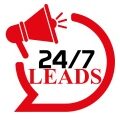
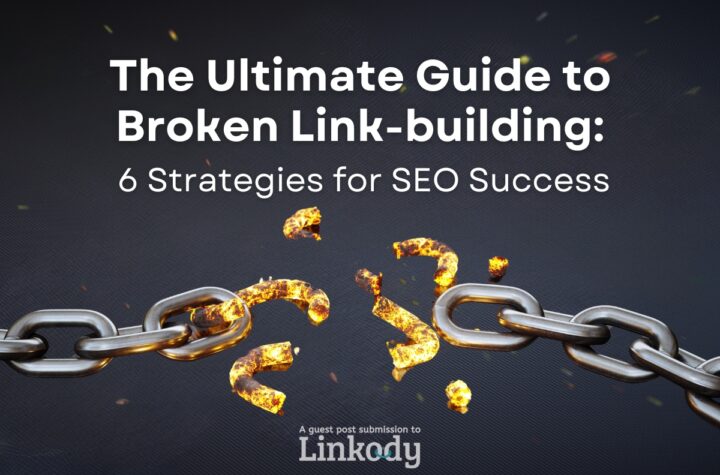
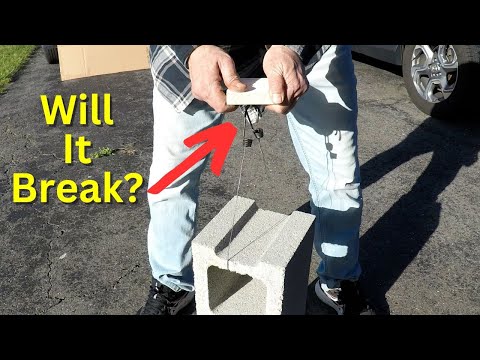


More Stories
The Ultimate Guide to Broken Link Building: 6 Strategies for SEO Success
SEO Game Changer: How Topic Clusters and Pillar Pages Can Skyrocket Your Rankings?
Every AI SEO Tool Mentioned At Pubcon Vegas